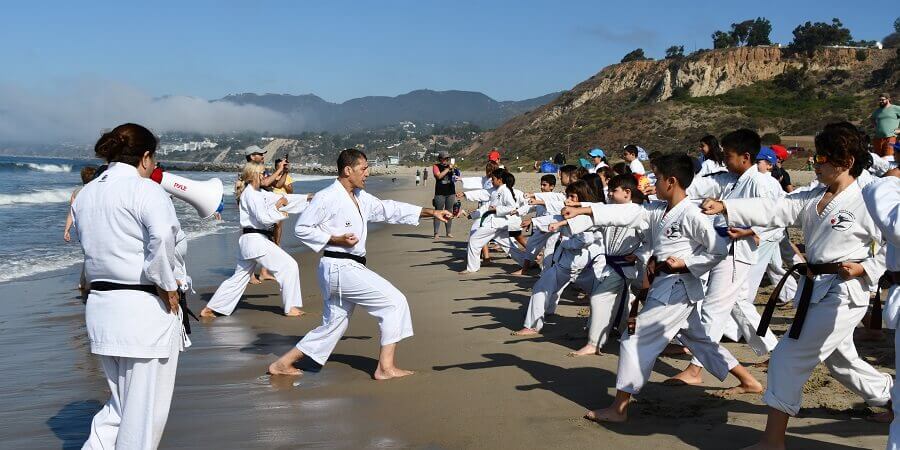We are Unique
Karate is an empty handed martial art, based on skill rather than brute strength, and as such size and strength are irrelevant.
As mentioned under the tab “Summary of Shotokan History”, Sensei Avi Rokah is considered to be the “torch bearer” in terms of passing Shotokan Karate to the next generation.
This is a responsibility he does not take lightly. Sensei Avi is like an encyclopedia – holding all of Sensei Nishyama’s teachings within.

Karate was developed under life threatening conditions. On the island of Okinawa, weapons were not allowed so natives had to transform their bodies into deadly weapons. Actually the two Japanese characters forming the word karate mean “empty hand”.
Karate is based on the principle of todome-finishing blow,
meaning “one chance-win or lose.”
Under these circumstances it was vital to use the body in the most efficient way, moving from the ground and up, from the core and out, and recruiting each segment of the body in the correct order.
In a true Master, every muscle, joint, and bone works in perfect harmony with one another, much like the instruments in an orchestra.
This “correct” way of moving is sown into the fabric of Shotokan through generations of trial and error. Only today is cutting edge research in sports science, physical therapy, and kinesiology discovering these underlying principles to efficient and injury free movement.
Sensei Avi Rokah has spent much of the past ten years studying anatomy, physiology, kinesiology, sports medicine, and injury prevention/rehabilitation, and has time and time again been baffled by the wisdom passed down to him through karate technique.
He teaches karate as a fusion of budo (Japanese Martial Arts tradition) and science. This fusion creates a one of a kind learning experience that can be enjoyed by practitioners of all age(4-100).
